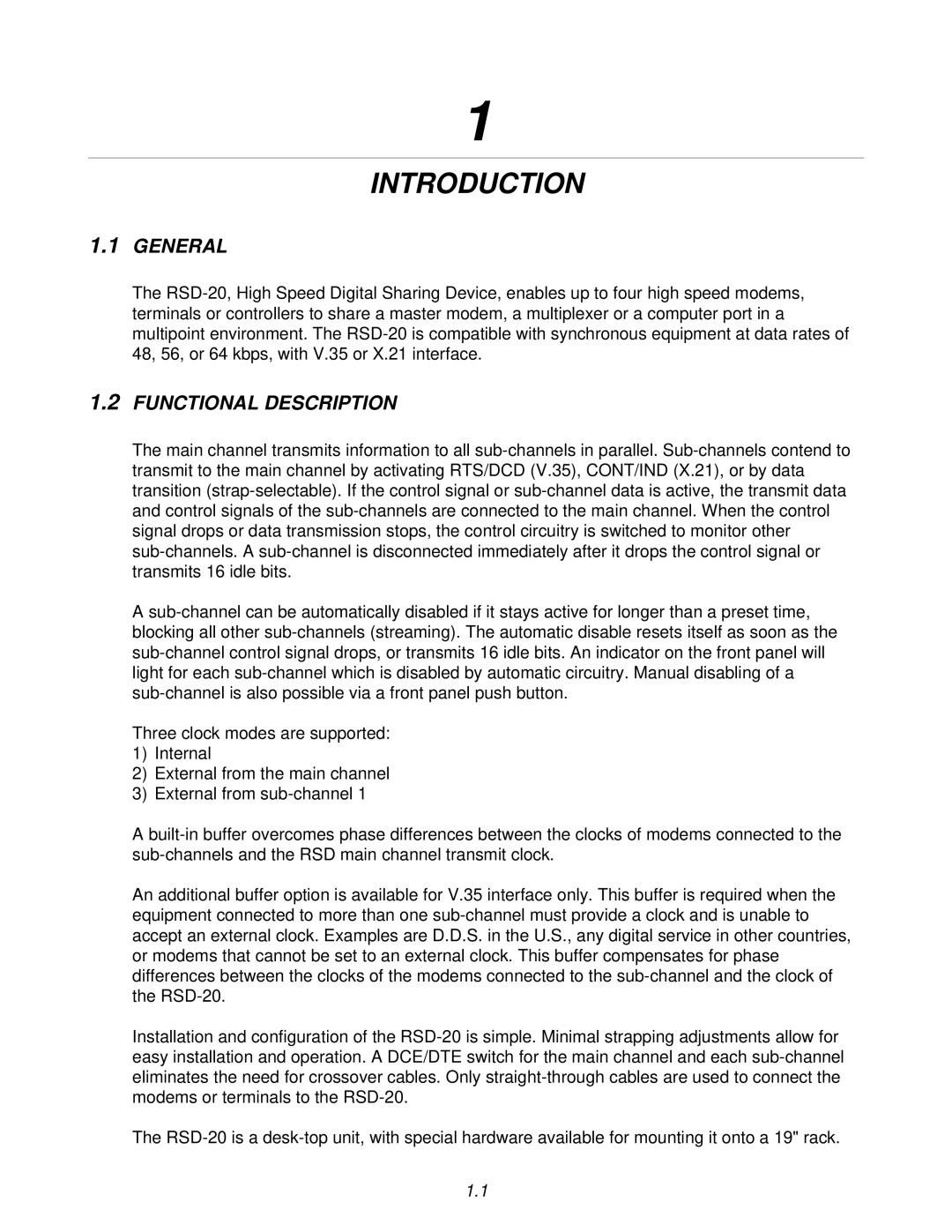1
INTRODUCTION
1.1GENERAL
The RSD-20, High Speed Digital Sharing Device, enables up to four high speed modems, terminals or controllers to share a master modem, a multiplexer or a computer port in a multipoint environment. The RSD-20 is compatible with synchronous equipment at data rates of 48, 56, or 64 kbps, with V.35 or X.21 interface.
1.2FUNCTIONAL DESCRIPTION
The main channel transmits information to all sub-channels in parallel. Sub-channels contend to transmit to the main channel by activating RTS/DCD (V.35), CONT/IND (X.21), or by data transition (strap-selectable). If the control signal or sub-channel data is active, the transmit data and control signals of the sub-channels are connected to the main channel. When the control signal drops or data transmission stops, the control circuitry is switched to monitor other sub-channels. A sub-channel is disconnected immediately after it drops the control signal or transmits 16 idle bits.
A sub-channel can be automatically disabled if it stays active for longer than a preset time, blocking all other sub-channels (streaming). The automatic disable resets itself as soon as the sub-channel control signal drops, or transmits 16 idle bits. An indicator on the front panel will light for each sub-channel which is disabled by automatic circuitry. Manual disabling of a sub-channel is also possible via a front panel push button.
Three clock modes are supported:
1)Internal
2)External from the main channel
3)External from sub-channel 1
A built-in buffer overcomes phase differences between the clocks of modems connected to the sub-channels and the RSD main channel transmit clock.
An additional buffer option is available for V.35 interface only. This buffer is required when the equipment connected to more than one sub-channel must provide a clock and is unable to accept an external clock. Examples are D.D.S. in the U.S., any digital service in other countries, or modems that cannot be set to an external clock. This buffer compensates for phase differences between the clocks of the modems connected to the sub-channel and the clock of the RSD-20.
Installation and configuration of the RSD-20 is simple. Minimal strapping adjustments allow for easy installation and operation. A DCE/DTE switch for the main channel and each sub-channel eliminates the need for crossover cables. Only straight-through cables are used to connect the modems or terminals to the RSD-20.
The RSD-20 is a desk-top unit, with special hardware available for mounting it onto a 19" rack.
